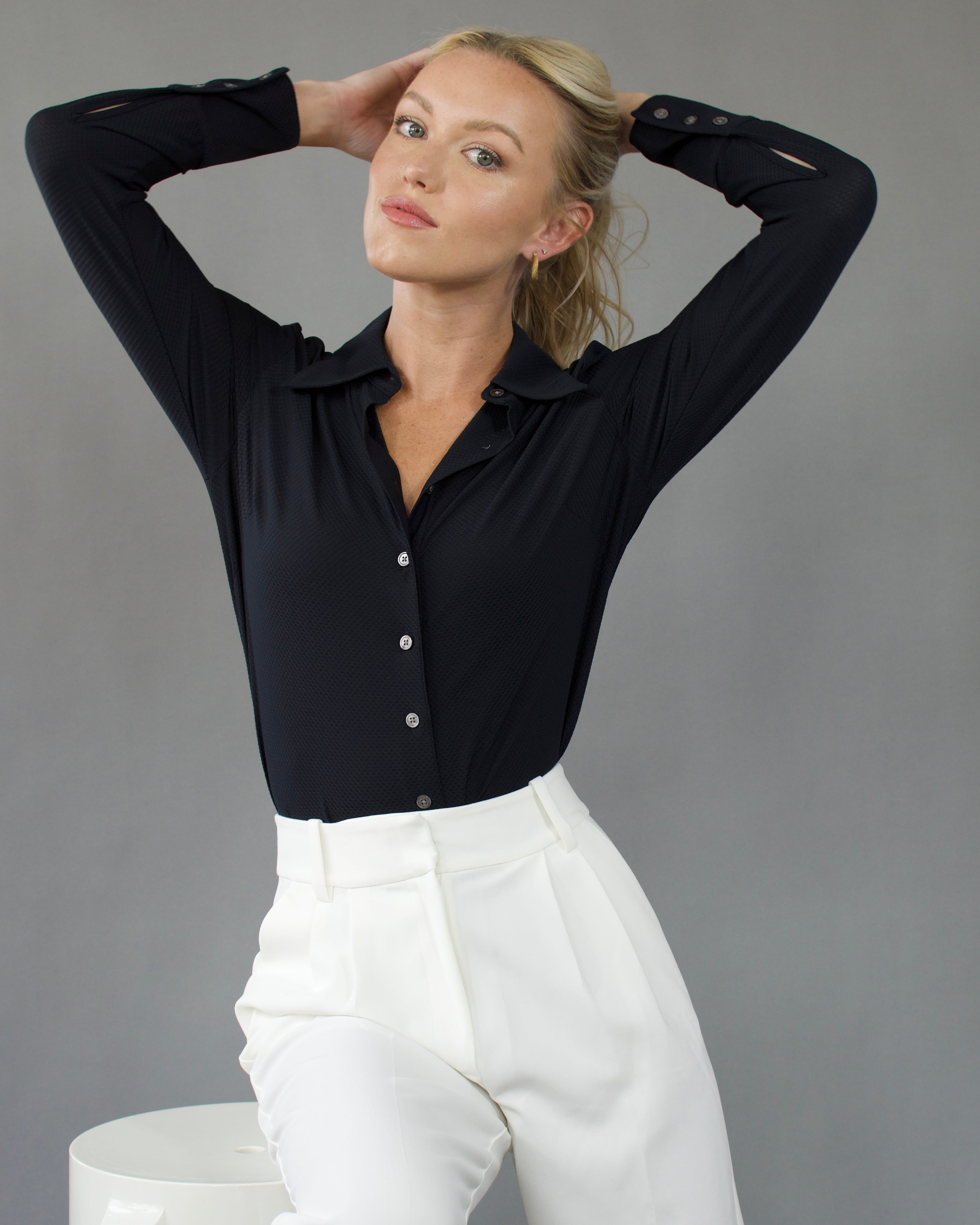Free Standard Shipping on orders $200+ in the U.S.
If you want a versatile top for your wardrobe, look no further than the blouse. A blouse is different from a shirt and usually has more free-flowing, billowy fabric. They can be used for both formal and casual occasions, are available in a dizzying array of styles, and work great all year round.
Despite their popularity, I find that many women don’t fully appreciate the versatility of blouses and I want to enlighten you! In the below ultimate blouse style guide, I explain everything there is to know including the different types, sleeves, necklines, and fabrics so you can pick the best blouse for any occasion.
Understanding Blouse Types
The term blouse can be generic and applies to a range of individual blouse types that have varying shapes, fits, fabrics, and styles. Some of the most common blouse types include:
- Classic blouse
- Camisole
- Tunic blouse
- Peasant blouse
- Button-down blouse
- Tank top
- Wrap blouse
When looking at women’s designer blouses the classic blouse is what most will wear but there are plenty of different styles if you want to create a more unique outfit.
For example, the tunic blouse is more billowy and free-flowing whereas the button-down blouse offers a more formal and fitted style. If you are looking for casual wear and something to lounge around the house, in a simple tank top blouse is the perfect option.
Blouse Materials and Fabrics
One of the major considerations when choosing a blouse is the fabric. Blouses are available in both natural and synthetic fabrics including:
- Cotton
- Silk
- Satin
- Polyester
- Rayon
- Lace
- Linen
Think about what fabrics you are comfortable wearing and if you prefer soft, smooth, silky, or textured fabric. Also, look at what season you will typically wear the blouse as some fabrics are better suited for winter wear.
Aside from the above fabrics, there is also a range of blended fabrics that combine two to provide enhanced benefits.
Blouse Necklines
I couldn’t create the ultimate blouse style guide without discussing necklines. The neckline is hugely important and can completely alter the look of a blouse. The neckline is often down to personal preference and can depend on how much skin you want to show but common blouse necklines include:
- Scoop neck
- V-neck
- Crew neck
- Boat neck
- Square neck
- High neck
- Collared neck
The classic V-neck is a great option and you can usually get blouses with either a shallow or deep V depending on which you prefer.
Collared necks and crew necks are great for formal blouses and can give a more professional look whereas the scoop neck, square neck, and crew neck could be considered more casual.
When choosing a neckline for your blouse, also consider if you wear jewelry and things like necklaces that you would like to show as some necklines will obscure them.
Sleeve Styles

Don’t overlook the sleeves either as these can completely change the look of the blouse, and its comfort and warmth. The most common sleeve types for blouses include:
- Cap sleeves
- Three-quarter sleeves
- Long sleeves
- Bell sleeves
- Short sleeves
- Bishop sleeves
- Puff sleeves
The length is the primary concern when looking at blouse sleeves and you may have a personal preference for either long or short.
Not only that, but there are different sleeve designs such as bell sleeves which have a characteristic flared outline. In contrast, puff sleeves usually have a lot of fabric at the shoulders which can create a more playful look.
Think about the length you prefer, and what style you want to achieve with your blouse and you should be able to choose suitable sleeves.
Blouse Styling Ideas
One of the great things about blouses is that they can work in so many different outfits - both casual and formal. To give you a head start, I have listed some basic styling ideas below:
Blouses work great with trousers or a high-waisted skirt to give you a professional but elegant look for the workplace and events.
If you want to look fancier and have a more “dressy” appearance, consider a blouse with more detailing or that is made from a more luxurious fabric.
To create a layered ensemble, a tailored jacket or blazer can work fantastically.
If you want more comfort and warmth, a jumper works great over a collared blouse.
Care and Maintenance
For care and maintenance, my first piece of advice is to check the manufacturer’s label! The label should clearly state how to wash the blouse and if you should avoid specific washing temperatures or tumble dryers.
As a general rule, blouses are usually made from thinner, more delicate fabrics and thus you should always handle them gently and use mild detergent where possible. As with any type of washing, don’t mix colors and whites, and try to wash similar fabrics together.
Find the Perfect Blouse for Any Occasion
Your mind should now be bursting with style options for blouses and you are probably already thinking of outfit combinations! As you can see, this is a timeless type of woman’s top that continues to reinvent itself with different styles that follow current fashion trends.


